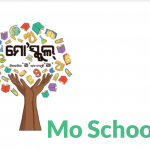 By Bizodisha Bureau, Bhubaneswar, October 4, 2023, More than 39.31 per cent of Odisha’s population belongs to socially and economically backward classes (SEBCs), the survey report of the Odisha State Commission for Backward Classes (OSCBC) reveals.
By Bizodisha Bureau, Bhubaneswar, October 4, 2023, More than 39.31 per cent of Odisha’s population belongs to socially and economically backward classes (SEBCs), the survey report of the Odisha State Commission for Backward Classes (OSCBC) reveals.
The survey was carried out from May 1 till June 6 this year, out of the projected population of over 4.95 crore in 2023, over 1.94 crore SEBCs participated in the survey. The total population of the state according to the 2011 census was over 4.19 crore.
The cabinet headed by Naveen Patnaiki passed a resolution on January 11, 2020, to conduct a socio-economic caste enumeration. The assembly had also adopted a unanimous resolution in this regard on February 17, 2020.
The report which comes close on the heels of the Bihar OBC survey found that 11 districts have more than 45 per cent SEBC population.
However, the SEBCs are mostly concentrated in the coastal belt with five districts having more than 50 per cent population of SEBCs. The districts are Balangir, Bhadrak, Boudh, Dhenkanal, Ganjam, Jagatsighpur, Kendrapada, Nayagarh, Nuapada, Puri and Subarnapur.
Six of them such as Boudh, Ganjam, Kendrapara, Nayagarh, Puri and Jagatsinghpur have more than 50 per cent SEBC population with Nayagarh having the highest, which is 58 per cent.
Eight are highly SEBC population-inhabited districts. These districts – Angul, Balasore, Bargarh, Cuttack, Deogarh, Jajpur, Kalahandi and Khurda – have SEBC population varying from 30 to 45 per cent. These districts are industrially-intensive and some are in the coastal belt.
Another 11 districts, mostly tribal dominated, are moderately SEBC population inhabited.
The population of the SEBCs in these districts varies between 15 and 30 per cent. These are: Gajapati, Jharsuguda, Kandhamal, Keonjhar, Koraput, Malkangiri, Mayurbhanj, Nabarangpur, Rayagada, Sambalpur and Sundargarh.
The distribution of the SEBC population is, however, not homogenous across the districts.
The survey also brought to the fore that 37.6 per cent of the SEBC population has only had access to primary level of education, while 10.1 per cent are still illiterate.
Besides, the representation of the SEBCs in government jobs is also very low – at only 2.8 per cent.
According to the survey, 49.6 per cent of SEBCs have a low level of education (primary and under matriculation level), while 22 per cent have passed matriculation, intermediate, and ITI/diploma holders.
Only 7.9 per cent of SEBCs have a college education with graduate and post-graduate degrees while 1.6 percent have professional degrees. Only 0.5 per cent of of SEBCs have more than a post-graduation qualification.
 The report said an impression has emerged from the survey that the educational background of the SEBC population is appalling despite incentives launched by the government. The educational spread among this population is negligible. Even with an increase in the level of education in the state, the levels for this category have witnessed a drastic decline. When specialized and professional education is concerned, the level for the SEBC population is dismal, it added.
The report said an impression has emerged from the survey that the educational background of the SEBC population is appalling despite incentives launched by the government. The educational spread among this population is negligible. Even with an increase in the level of education in the state, the levels for this category have witnessed a drastic decline. When specialized and professional education is concerned, the level for the SEBC population is dismal, it added.
The report mentioned that in the municipal corporation areas, the survey witnessed apathy among the SEBC population which did not register for voluntary participation in the survey process.
In Cuttack and Bhubaneswar Municipal Corporation, the pool for the survey was very small as people willingly did not come forward to participate in the survey.
The overall outcome of the survey was that irrespective of their dominant numerical strength in the population, the SEBCs are socially and educationally backward. The process of development is slow among them and to date, many of the societal benefits have not been accrued to them.
The report which was submitted to the Odisha government on Tuesday but is yet to be made public has recommended that the SEBCs are in need of special assistance through formulation of target-oriented socio-economic welfare schemes for their inclusive growth to change their status in the society.
The share of SEBCs in “non-government (salaried)” services was found to be very low at 4.7 per cent. They have a negligible share of 1.3 per cent as professionals.
The highest percentage of 19.3 per cent was engaged in agriculture and had their own land, while 8 per cent were engaged in the non-agriculture sector. While 5.3 per cent were agricultural labourers, 4.8 per cent were self-employed. Besides, 2 per cent were agriculture sharecroppers while 3.2 per cent were engaged in traditional occupations.
The report said the survey aims to present the status of the social and educational conditions of the people belonging to backward classes in the state and to assess their geographical spread, in the form of a database, to facilitate the formulation of specific policies and programmes for these sections of the population, in order to bring them into the fold of development.



Leave a Reply
Be the First to Comment!